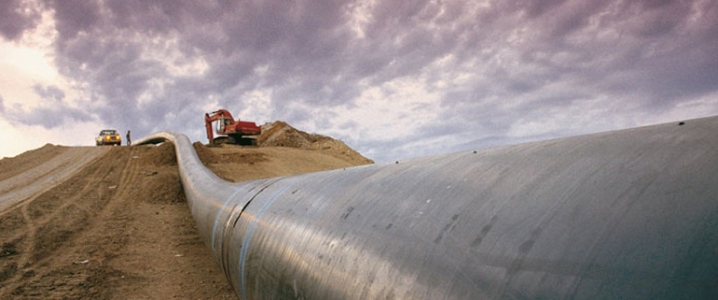A $1.7 Billion Natural Gas Pipeline To Ease The Permian Glut

Kinder Morgan, DCP Midstream, and a unit of Targa Resources are moving forward with their plan to build a US$1.7-billion gas pipeline in the Permian that could ease some of the takeaway bottlenecks in that basin, and reduce natural gas flaring that has increased greenhouse gas emissions.
Kinder Morgan Texas Pipeline, DCP Midstream, and an affiliate of Targa Resources Corp announced on Thursday a final investment decision to proceed with the Gulf Coast Express Pipeline Project (GCX Project), designed to transport up to 1.92 billion cubic feet per day (Bcf/d) of natural gas. The GCX Project Mainline portion consists of approximately 82 miles of 36-inch pipeline and 365 miles of 42-inch pipeline originating at the Waha Hub near Coyanosa, Texas in the Permian Basin, and terminating near Agua Dulce, Texas.
Kinder Morgan and its partners decided to proceed with the gas pipeline plan after they had executed definitive joint venture agreements and secured sufficient firm transportation agreements with shippers. Around 85 percent of the project capacity is subscribed and committed under long-term, binding transportation agreements, and the partners expect that the remaining capacity will be subscribed by early 2018.
The pipeline is expected to be in service in October 2019, subject to receiving all regulatory approvals. Construction is planned to begin in Q1 2018, Kinder Morgan Natural Gas Midstream President Duane Kokinda said.
Shippers that have committed to the project include, but are not limited to, DCP Midstream, Targa, Apache Corporation, and Pioneer Natural Resources.
DCP Midstream and Targa operate natural gas processing facilities in the Permian and need more takeaway capacity. Apache and Pioneer, on the other hand, are major producers in the Permian and look for ways to monetize growing quantities of associated gas as crude oil production increases.
Rising gas quantities have led to more flaring in the Permian. According to a November 2017 report by the Environmental Defense Fund, “In 2015 alone, enough Permian natural gas was flared to serve all of the Texas household needs in the Permian counties for two and a half years.”
“A Clean Air Task Force report ranked seven Texas Permian counties in the top 10 worst U.S. counties for asthma attacks,” according to the report.
There are some companies that are doing a good job in avoiding gas flaring, but there is a wide performance gap among Permian producers in terms of flaring practices. The rush to pump the higher-value oil “has some Permian drillers simply throwing away the gas. Lack of access to gas pipelines, low gas prices, and outmoded regulations are driving this waste,” the report says.
Related News
Related News

- Keystone Oil Pipeline Resumes Operations After Temporary Shutdown
- Freeport LNG Plant Runs Near Zero Consumption for Fifth Day
- Biden Administration Buys Oil for Emergency Reserve Above Target Price
- Mexico Seizes Air Liquide's Hydrogen Plant at Pemex Refinery
- Enbridge to Invest $500 Million in Pipeline Assets, Including Expansion of 850-Mile Gray Oak Pipeline
- Evacuation Technologies to Reduce Methane Releases During Pigging
- Editor’s Notebook: Nord Stream’s $20 Billion Question
- Enbridge Receives Approval to Begin Service on Louisiana Venice Gas Pipeline Project
- Mexico Seizes Air Liquide's Hydrogen Plant at Pemex Refinery
- Russian LNG Unfazed By U.S. Sanctions




Comments